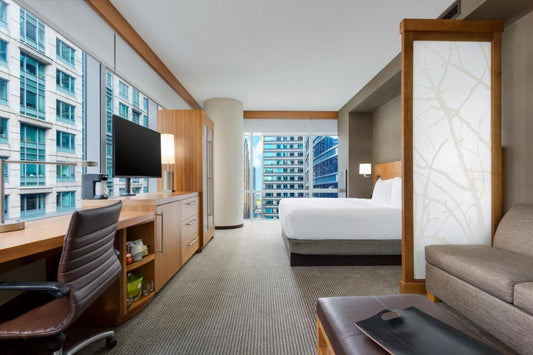When it comes to black communities, public art should be more than an interesting image. So says Chris Devins, a Chicago photo-muralist with a background in urban planning and a passion for showcasing black identity. Devins’ works—found throughout the South Side and beyond—not only uplift the people he celebrates, but helps renew their declining neighborhoods.
Take the photo-murals he created for the Mariano’s grocery store in Bronzeville, an iconic African-American neighborhood in Chicago. Commissioned by supermarket-magnate Bob Mariano in 2016, Devin’s 32-piece display features historic images of residents—taken by photographer Russell Lee in 1941—as well as locally-born black celebrities.
Located in what was a food desert, the flagship store not only provides residents with fresh, nutritious food, but has created 400 jobs and sparked additional redevelopment. Devins’ art—which adorns the store’s exterior wall and fence—forges a cultural link between the new store and the storied neighborhood it serves, a process he calls “creative placemaking.”

“Mariano’s is happy to serve the Bronzeville community, and showcase the work of artist Chris Devins. His photo murals outside the store celebrate the rich cultural history of the neighborhood. The artwork helps to build a community gathering place showcasing the character and history of the site,” says Director of Strategic Brand Development, Amanda Puck.
Then there’s Vanguard Archives, a century-old records management and storage facility in Chicago, where Chris did 10 murals in a work he calls “Stations”. In the 1980s, the company reluctantly covered its first-floor glass block windows with prestressed concrete panels for security purposes.
“I’d been searching for a solution to improve the building’s appearance and honor a significant Chicago community that had been victimized by Chicago's ‘improvement’ cycle,” says CEO Helmut Mlakar.
Devins’ art was exactly what he’d been looking for.
“The impact of Chris’s murals on our business has been twofold. It calls attention to a building that people barely noticed. Now, people notice and admire it. Our neighbors see that the images depict our love of the area and its residents, past and current.”
Public Art with a Purpose
“I’m not as interested in self-expression as I am in the intersection of local faces and places,” says Devins, who holds a Masters in Urban Planning and Policy.

“My goal is to capture a neighborhood’s collective identity. When you do that successfully, people are drawn to it—and that in turn draws economic development.”
In fact, Devins creates space in his murals for visitors to insert themselves, inviting participation. When people share their selfies on social media, it draws more interest to the area. His murals have even served as background on artists’ album covers.
Beyond storefronts, his murals beautify schools, black history museums, beach walls, billboards and apartment buildings—not to mention retail parks and commercial corridors. While many are permanent, some are temporary, wheat paste installations.
His projects are commissioned by cities, local non-profits, and—more and more often—real-estate developers who understand the value his art will bring to their projects.
Beyond his belief in responsible urban planning, Devins’ passion for celebrating black identity may stem from his own life experience. The child of a black mother and Irish father, he not only experienced racism in the outside world but from within his extended family.

Future Projects
One of Devins’ upcoming projects includes a large-scale, three-mural series in Hyde Park, where the Obamas have a home. It will feature a patchwork of ethnicities, including black, Jewish, Indian, and Asian faces of people who live in the multi-cultural area.
In addition, Devins sits on the Board of Directors of the Bronzeville Trail Task Force development group, which will formally launch its campaign on Martin Luther King’s birthday. The group seeks to transform an abandoned train line into an elevated biking and walking trail, similar to the 606, a popular trail on Chicago’s North Side that has brought significant development to the area in the last five years.
“Our goal is to bring the same type of amenities and development to residents of the South Side,” says Devins.
And the visionary artist has his sights set beyond the Chicago skyline. He’s completed projects in Michigan and Utah and welcomes work from black communities and developers nationwide.
“Many historically-black areas have ‘family photo albums’—a cache of great old photos,” he explains. “They’re beautiful and make terrific source material for these types of projects.”
On the flip side, Devins cautions against empty public art that has no tie to the community around it, maintaining it weakens neighborhood identity and invites gentrification.
“When you combine art and urban planning in a thoughtful, respectful way, you help protect and uplift the local cultural identity, while supporting future development.”
Find out more on Chris Devins' website or follow on Facebook or Instagram.















